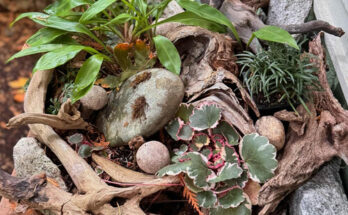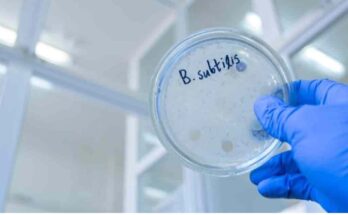Keeping your potted plants watered is vital to good plant care. But drainage in potted plants is also essential to caring for plants.
So what can you do to ensure your potted plants have good drainage that helps protect against problems such as fungus gnats and root rot?
This article shares the concept and importance of good drainage in potted plants and provides tips and tricks to help you give just the correct drainage for plants in containers.
Why Is Correct Watering So Important?
There are virtually no plants (aside from swamp plants and aquatic plants) that like to stand in water.
If the soil in your potted plants and container plants becomes waterlogged, the fungus starts to grow, and your plants’ roots will begin to rot.
If you see that your plants are growing slowly, have developed brown spots on the stems or leaves, or have many yellowing leaves, your problem may be soggy, compacted soil caused by overwatering or poor drainage.
Should You Put Stuff In The Bottoms Of Pots For Drainage?
The old way of potting plants involved putting a layer of broken crockery or pebbles in the bottom of the pot to provide better drainage.
These days we don’t subscribe to that theory.
Generally speaking, good commercial potting soil should provide just the right amount of drainage for many plants, as long as the container has ample drainage holes.
Even so, old habits die hard, and many people still add a layer of something to the bottom of the pot with the idea that it will help drainage.
Substances you may see include:
- Plastic bottles: If you have a huge container and don‘t want or need to use enough potting soil to fill the entire container, it won‘t hurt to put a layer of plastic bottles (with caps on and sealed) in the bottom of the pot.
This can help make a large container lighter for easier moving, too. Finally, you may want to put a layer of netting over the layer of bottles to prevent soil from pouring between them and out the drainage holes.
- Potting shards or gravel: This may cause the soil above the layer of additional material to retain water.
- Wood mulch: Used as a layer under the soil, this material may retain too much water and develop fungus.
- Packing peanuts: This is a generally bad idea. Plant roots grow into packing peanuts and make repotting a nightmare.
- Activated charcoal: This material may benefit when added to the bottom of a pot in a layer. Activated charcoal can help prevent root rot and helps aerate the soil.
It should be noted that another reason for adding a layer of something to the bottom of a plant pot or container is to keep the soil from escaping through the drainage holes.
You can use plastic netting, a coffee filter, a piece of screen, or a single shard of pottery to achieve this.
Should You Add Stuff To The Soil To Improve Drainage?
In most cases, a well-prepared commercial potting mix will have the proper drainage qualities when paired with the right plant.
- A general purpose, pasteurized potting mix is just suitable for most plants.
- A good succulent and cactus mix is right for these plants and euphorbia.
Specialty mixes, such as African violet and orchid mixes should provide just the right
drainage for those plants.
In some instances, you may not be able to find just the right soil for your plant or your circumstances.
You may want to enhance drainage by amending the soil with substances such as:
- Pea gravel or small potting shards incorporated lightly into the soil will enhance drainage and help you create a sharply draining mix.
- Wood chips incorporated lightly into the soil help enhance drainage while slightly retaining moisture. This can be helpful for plants that need very slightly moist soil but cannot tolerate soggy soil.
- Organic matter such as well-rotted manure, coco coir, peat moss, and compost will also improve drainage while retaining the right amount of moisture.
- Activated charcoal incorporated into soil improves drainage while helping deter fungal and bacterial infections and facilitating the healthy dispersal of fertilizer products.
- Perlite lightens the soil and promotes good drainage while helping the soil retain a healthy amount of moisture.
For Good Potted Plant Drainage, Keep It Simple
The good news is that, for the most part, providing your potted plants with the right drainage is an easy task.
Just be sure to use a container that has plenty of drainage holes, and buy a good quality of the right kind of potting mix.
Remember, it’s better to lighten the soil for more drainage than to add a material layer at the pot’s bottom.
Source link
Originally posted 2022-07-19 13:36:06.





